Have you noticed that your Two-Month-Old baby is no longer so tiny? Once your baby reaches the age of two months, there are numerous exciting growth and developmental milestones to look forward to. We also go through how to handle common health issues like diaper rash and coughs. If you’re about to return to work, we also have a section on things to remember so that the transition is as easy as possible for both you and your baby.

Two-Month-Old Baby Milestones in Infant Development
This month will be full of discoveries for your baby as he grows more aware of his surroundings. Here are some of the developmental milestones that your 2-month-old baby might be approaching.
The Mani-Pedi Routine Promotes Physical Development
During these early months, babies typically grow 1 to 12 inches in length and gain 1 to 2 pounds in weight. At each appointment, your healthcare practitioner will monitor your baby’s development rate, noting his weight, length, and head circumference to ensure he’s on track and doing well.
.In terms of development, you may have noticed that your baby’s nails appear to grow at the speed of light. You’ll probably need to clip or file your baby’s fingernails once a week, and his toes twice a month. You might not have to remind yourself because you’ll know when you or your baby is scratched! Here are some pointers for caring for your baby’s nails:
- Baby nail scissors or clippers, as well as a soft nail file, should be used.
- Clip your baby’s nails while he’s sleeping or after a relaxing bath to make his hands less of a moving target.
- Push down on the skin of the fingertip to trim only the nail and not the skin.
- After trimming the nails, file any rough edges.
- If you’re still confused about how to cut your baby’s nails securely, ask the healthcare provider to demonstrate.
Even more “growing news,” as your baby’s bones fuse together, the soft patches on his or her head, known as fontanelles, will begin to stiffen.
Senses: Color Vision in the World
Your baby will begin to recognize items and will like looking at familiar human features, particularly those of his or her parents. Your baby may have been drawn to simple patterns with straight lines in the early weeks, but he’ll soon notice circular shapes and patterns like bull’s eyes and spirals. Your infant is also improving his or her colour vision.
When you take your kid on walks, he will enjoy staring out the stroller or baby carrier. Help him learn by speaking the names of various objects aloud, especially anything that attracts his interest.
Movement: Baby Squats
Although many of your baby’s motions are still reflexive, he will progressively gain control over more of them. He may appear less active for a while as some of his early reflexes fade, but new, more intentional motions will emerge. The kicks he may have been practising last month may begin to gain force, as you may discover if he accidentally kicks you. He’ll begin managing his knee bending and straightening in the following weeks. If you hold him upright with his feet on the ground, he may squat and then “stand” — and he’ll soon discover he can bounce..
Hand and finger skills are also developing in your infant. He might be spending more time with his hand unclenched, and he’ll probably be interested in his hands as they pass in front of him. He’ll gradually gain the capacity to bring his hand to his mouth — initially by accident, but eventually, he’ll put his hands in his mouth on purpose since sucking his knuckles will be comforting. If you put a rattle in his hand, he might hold it and even shake it, but when he gets bored, he’ll drop it.
All the tummy time he’s been putting in (while you keep an eye on him) will start to pay off. Your kid will be able to push up off his arms and momentarily hold his chest and head up around this month or next. This is significant since it is a step toward increased independence for your child. Gaining this skill will require him to be able to glance around at whatever interests him, even while resting on his stomach.
Personality: Muh-muh-muh-muh
Your baby’s individuality will emerge more and more with each passing day. It will begin to manifest itself in the way he communicates through facial expressions, vocalizations, and even gestures. For example, if you smile at him and he is happy, he may return your smile. Around this time, he may begin to amuse himself by making all sorts of bizarre new sounds.
You may hear muh-muh and bah-bah, as well as aahs and oohs. Talk to him while repeating these sounds back to him. At this period, “baby babble” is vital, but real words should be included as well. Throughout, he will learn that discussion is a two-way street in which everyone takes turns and each input is valuable. As the week’s pass, your kid will become more sensitive to your tone of voice and will be able to gauge your mood based on how you speak to him. When you’re changing his diaper, taking him for a stroll, or washing him, tell him what you’re doing.
Soon, your baby will be shrieking or laughing in excitement instead of just smiling. However, don’t be shocked if your infant is less receptive to strangers. His favourite people are his parents, his brothers, and most likely other regular guests. Your infant, like all adults, has preferences!
A Day in the Life of Your Baby
Every baby is different, but here’s a glimpse of what a typical day could look like with your baby.
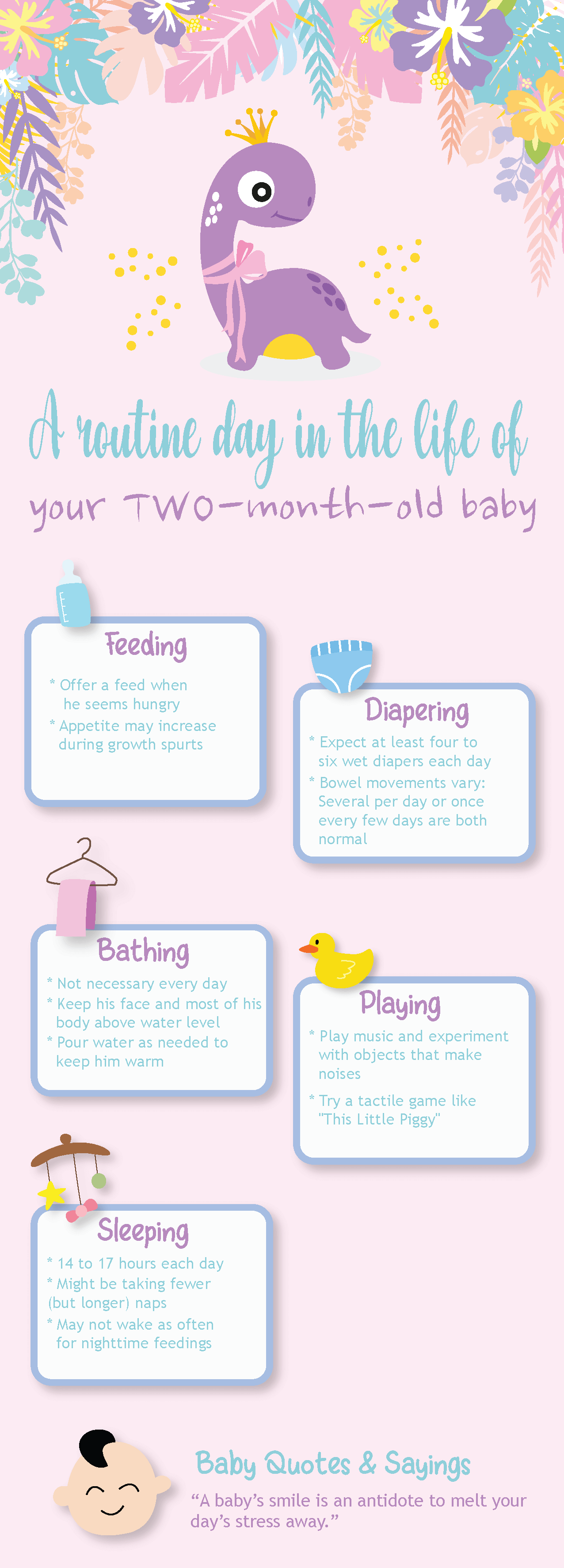
How to Support Your Baby’s Development
Both playing and engaging with you have a significant impact on your baby’s brain development and early learning. Here are some ideas for joint activities:
- Read to your baby. Even if he doesn’t understand everything you say, your baby is listening to the noises you make and learning about tone and tempo. Don’t be afraid to read the same book over and over again; newborns thrive on repetition. Watch this short video on language development through “baby talk” for more advice on reading to your baby.
- Have a “chat.” Respond to your baby’s coos and aahs, and start a discussion with him by telling him what you’re up to. Try not to interrupt or turn away when he “talks.” Your focus informs him that his voice is valuable, which helps to create trust.
- Tummy time. Continue to give your baby short tummy times throughout the day to help build his neck, arm, and shoulder muscles. Tummy time entails placing your baby on his tummy on a hard surface, such as the floor — just keep an eye on him.
- Introduce a variety of sounds. Play music for your infant or give him toys that generate different sounds when pressed. Allow him to hear the sounds of normal life as well. Have him safely nearby when you conduct home duties, for example — the sound of you tidying will most likely captivate him.
This page is based on professional advice from reputable medical and government organizations, such as the American Academy of Pediatrics and the American College of Obstetricians and Gynecologists. This page’s material should not be used in place of professional medical advice. For a complete diagnosis and treatment, always seek the advice of a medical expert.




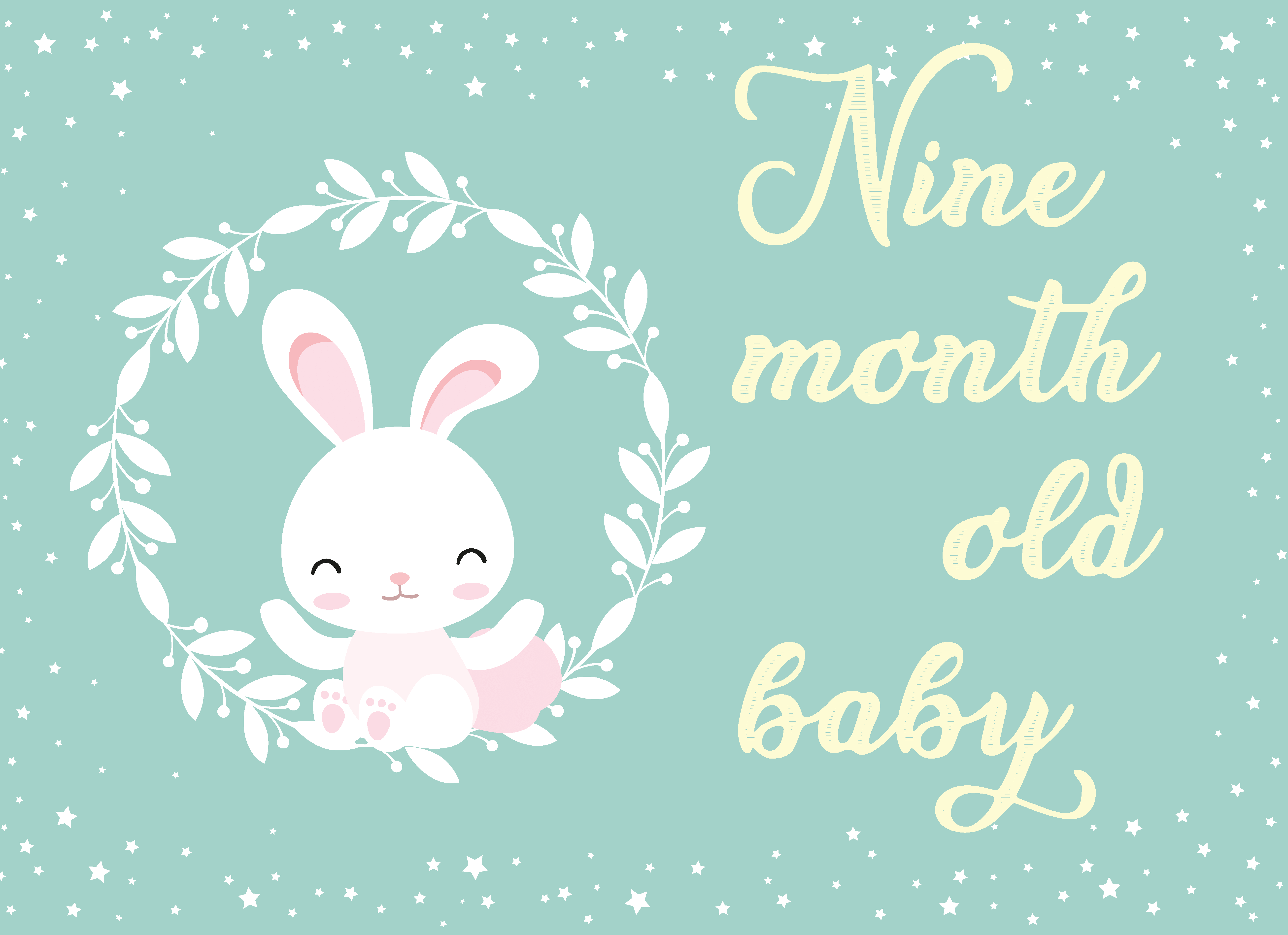


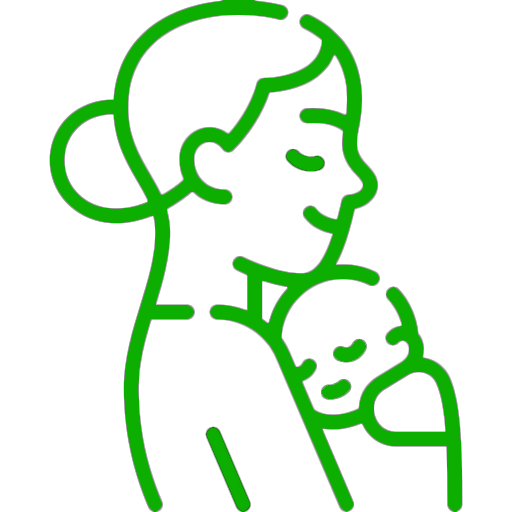


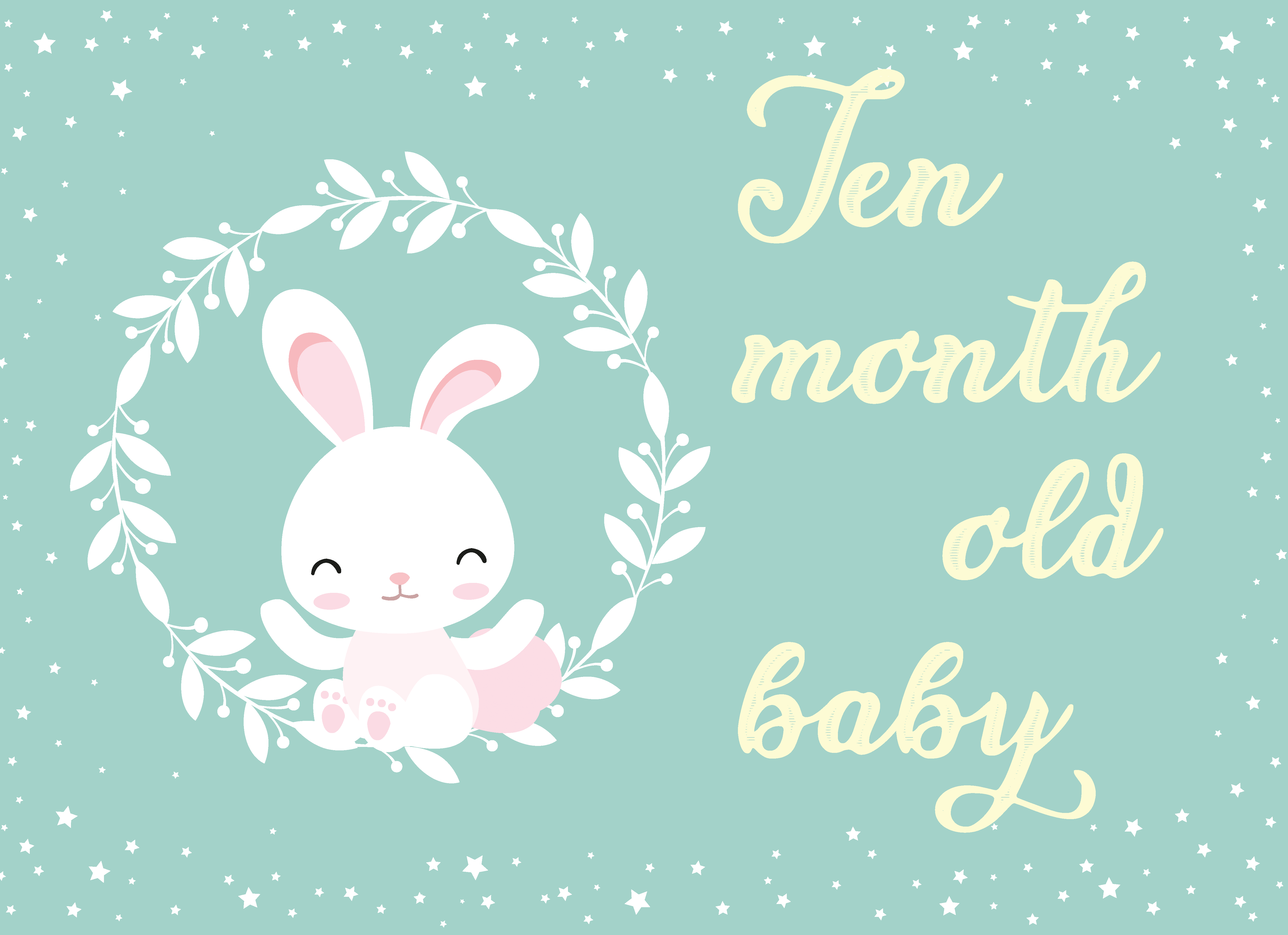
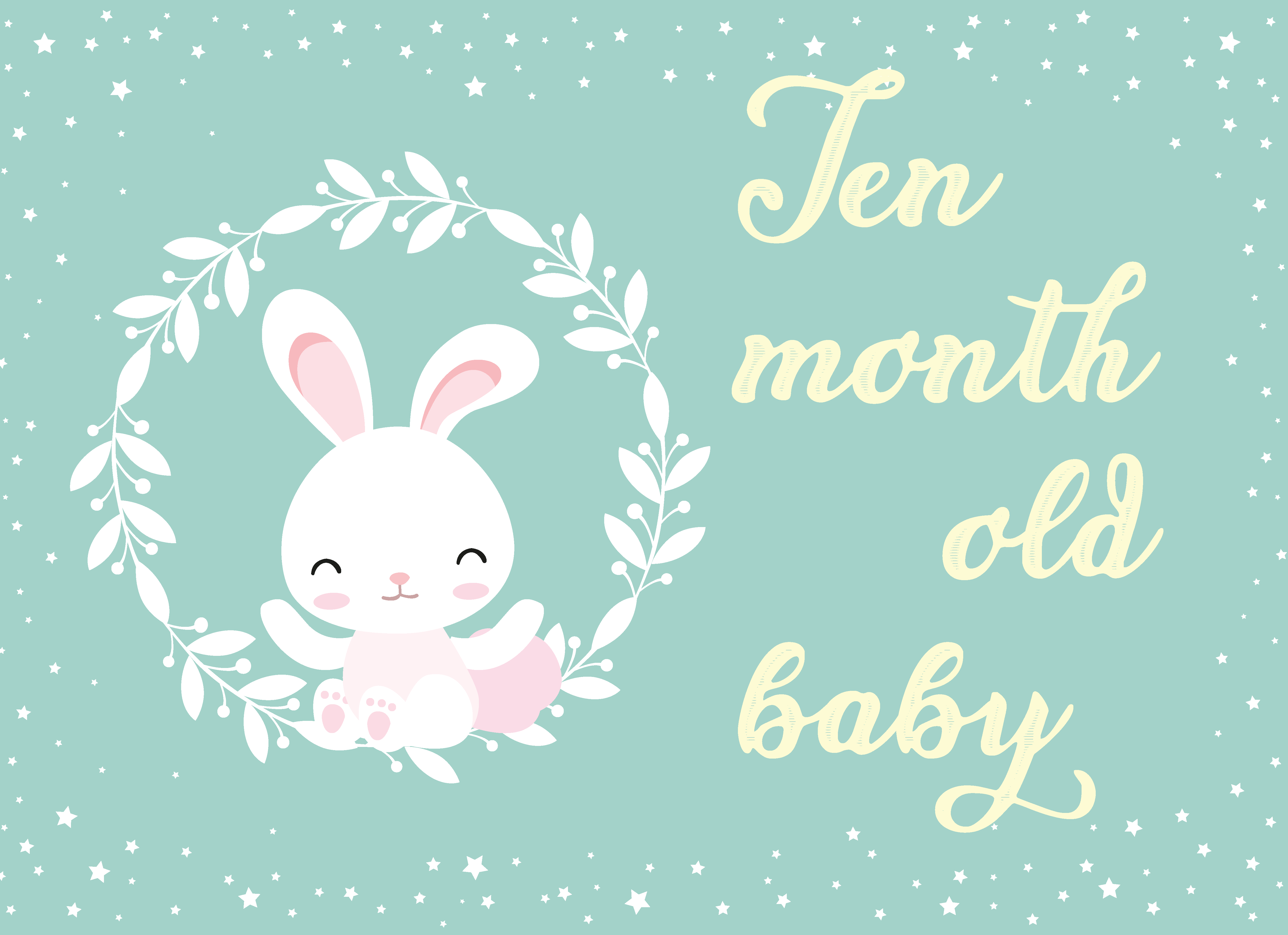

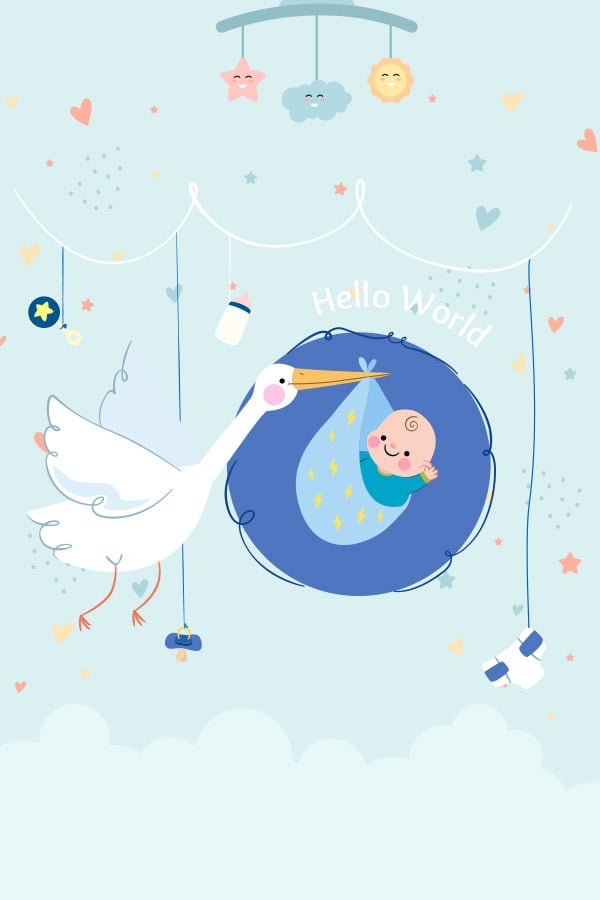
Leave a Reply
View Comments